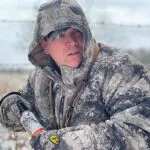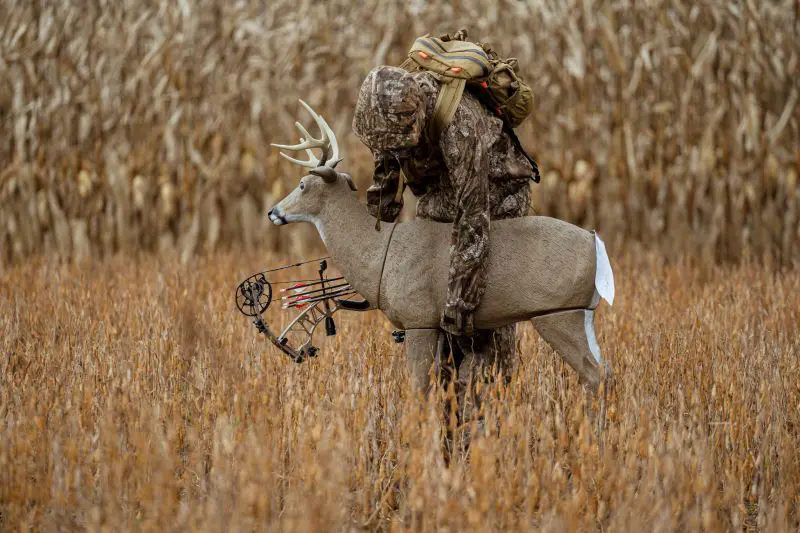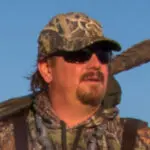The air is chilly, and the last of the colorful leaves hang from the trees before they fall. The woods feel alive, charged with excitement and tension. It’s that pre-rut time when bucks are on the move, restless and looking for does. Every grunt, scrape, and shadow draws their attention. It’s also the time when a well placed buck decoy, like the Blocker Outdoors Ol Hank Decoy, can push a curious or territorial buck over the edge. Used right, a decoy during this phase doesn’t just attract attention; it incites action.
The pre-rut is all about pecking order. Bucks are fired up but still on guard, walking that line between caution and confrontation. That’s where a buck decoy shines. When a buck spots what looks like a rival in his area, instinct takes over. He doesn’t see molded plastic; he sees a challenger standing where he doesn’t belong. But to make that illusion believable, every detail matters; posture, placement, calling, and scent all have to tell the same story.
How To Position Your Decoy
Posture sets the tone. The Ol’ Hank Decoy works best in the pre-rut, when bucks are curious but not ready to fight. Set it up so it looks alert and ready to fight any buck that comes in, like one that knows he belongs but isn’t looking for trouble. That little hint of dominance mixed with curiosity is what gets other bucks to come closer without running them off. Place the decoy where bucks can effortlessly see it, such as the edge of a food plot, an opening in a travel corridor, or a funnel leading out of bedding cover. Face it slightly toward your stand and across the expected approach path. That angle gives incoming bucks a broadside view of the decoy, and when they swing downwind to check it out, they’ll offer you a perfect shot window.
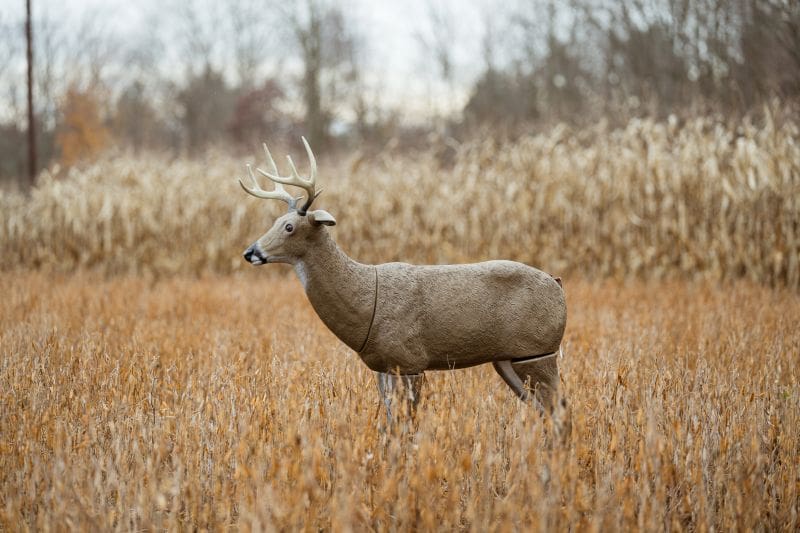
Adding Calls and Scents
A decoy might catch the eye, but sound and scent helps completely fool a buck. Pairing your setup with subtle rattling and grunting can turn a passing buck into a committed one. When I was a teenager, watching VHS hunting videos, I loved seeing hunts where the hunter used a decoy and rattled and grunted at a buck until he was within archery range. That was some exciting hunting action, and it was one of my inspirations for using decoys today.
When using calls, start with a brief, realistic rattling sequence, not a cage fight, but something that sounds like two bucks testing each other. It is important to begin slowly because if a buck is nearby, you don’t want to scare or push deer out of the area by being too loud. Follow your rattling with a few deep, throaty grunts on a grunt call to reinforce the message that there’s another buck in the neighborhood. Then stop and let the silence work for you. Bucks often approach quietly, scanning for the fight they just heard. When they see Ol Hank standing there, tall and ready, the visual confirmation seals the deal, remember, too much calling can ruin the magic; confidence comes from restraint.
The sounds are working; now it’s time for the smell. Think about how many times you have encountered a buck running into the sound of rattling or grunting, then lick his nose or sniff to catch the scent. Scents are the invisible detail that ties everything together. The buck wants to know if what he hears and sees is real, and the only way to do that is through smell. During the pre-rut, bucks are both territorial and love struck, so combining a touch of dominant buck scent with a hint of doe in estrus can create the perfect scenario. Use scents smartly and sparingly. Put just a few drops on nearby grass, brush, or in a mock scrape upwind from your decoy, never on the decoy itself. This makes a buck follow his nose to the setup naturally, without overdoing the smell. Having a mock scrape where he can see it adds a touch of realism, and if you hang a scent dripper to make it seem fresh, it can really bring the whole scene to life. The goal isn’t to flood the woods with aroma but to create a believable scene that a real buck would investigate.
Scent Control When Using A Decoy
Realism is pointless if your decoy smells like a human or the back of your truck. Scent control is the silent factor that separates success from failure. Always handle your decoy with scent-free gloves, and store it in a sealed, scent-proof bag or tote when it’s not in use. Before each hunt, give it a quick rinse with an unscented cleaner or wipe it down with an odor eliminating spray to remove any lingering plastic or storage smells. When carrying a decoy in, watch that it doesn’t brush against gas cans, food, or anything else with human scent. Once you’re at your hunting spot, take your time setting it up, and if you need to adjust the decoy, keep clean gloves on. It’s the little things like this that can keep even the most suspicious bucks from getting spooked. After each hunt, wipe down the decoy and let it air out before packing it away again. The less human contamination, the more convincing your decoy becomes. Lastly, when you set up the decoy where you’re hunting, give it one last spray in the field before the hunt begins.
Positioning The Decoy
Realism starts with where and how you place your decoy. Even the best looking buck decoy will blow your cover if it’s standing in the middle of an open field under bright sunlight. Set the decoy where it looks natural, just off center, with grass, brush, or sticks sitting around the base to help it blend in. Watch for shadows or something shining that could make it look out of place. If there’s a little wind, let the tail or ears move; that slight motion can make all the difference. Sometimes just a small flick is enough to convince a curious buck that what he’s seeing is real.
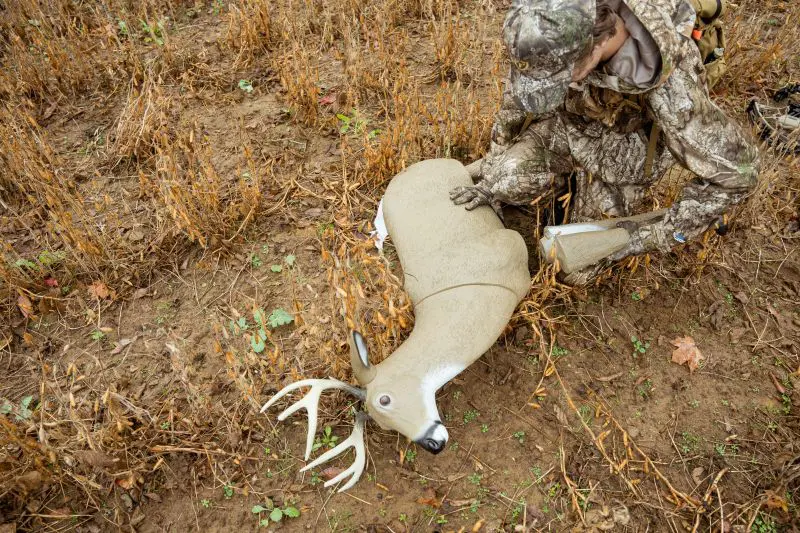
A decoy isn’t just another hunting product; it’s a storyteller. When used purposely, it sends a message of dominance, curiosity, and opportunity, triggering a buck’s instincts better than other tools. During the pre-rut, when bucks are searching for a reason to test their rank, the Blocker Outdoors Ol HankDecoy provides that reason in the most realistic way possible. Pair it with convincing sounds, subtle scent, and a clean, natural setup, and you’ll have everything needed to turn curiosity into confrontation and confrontation into success.
